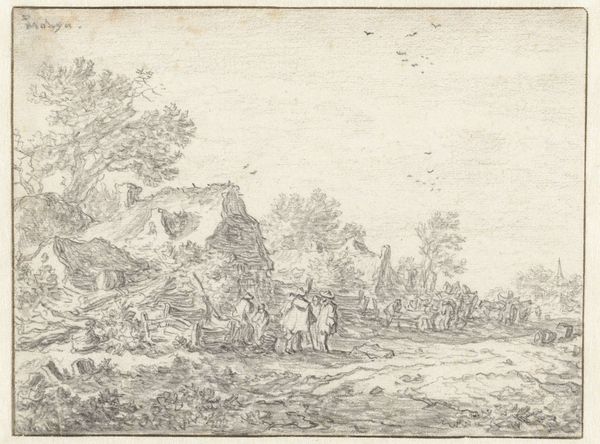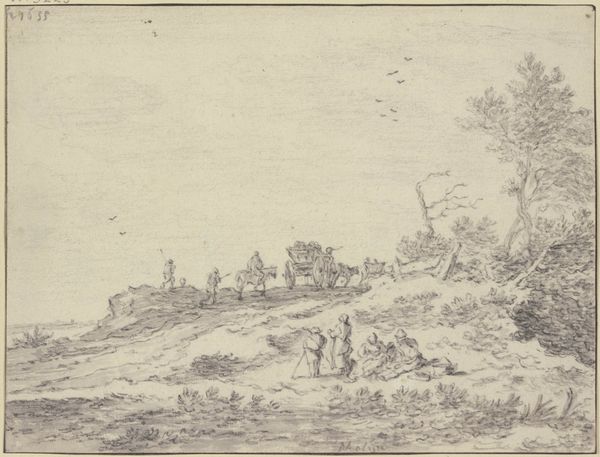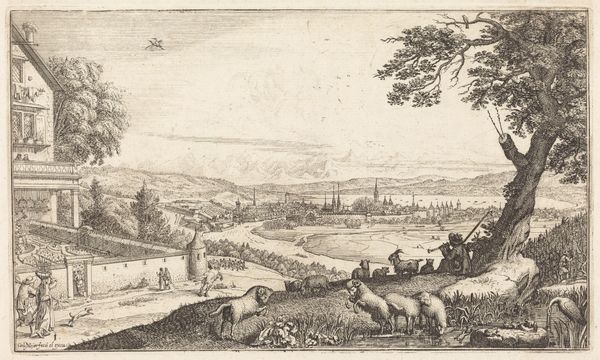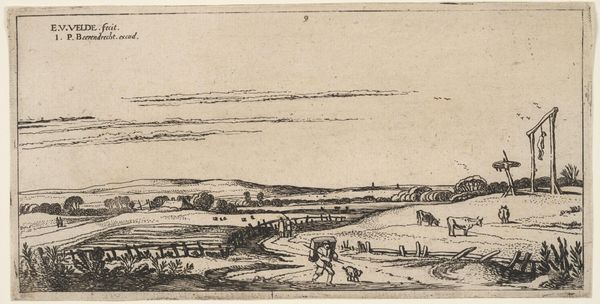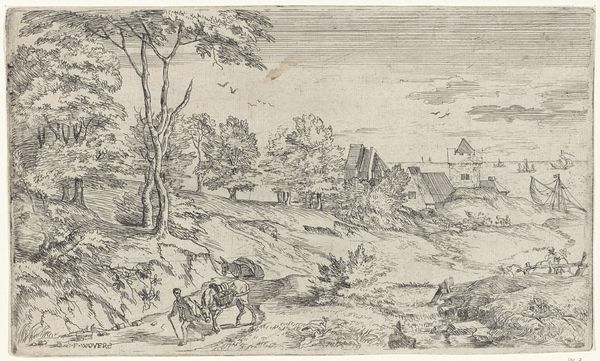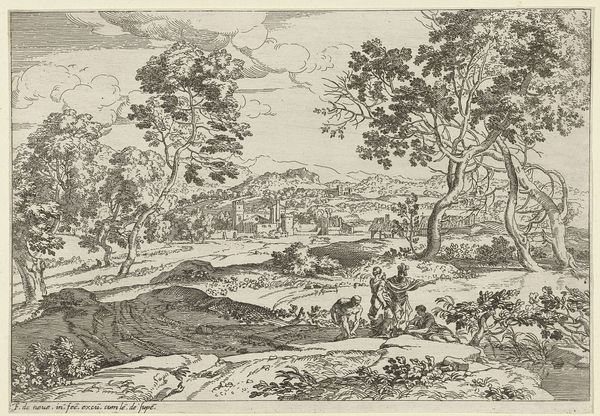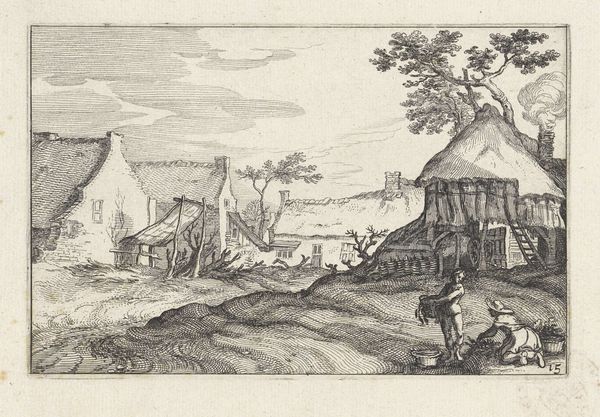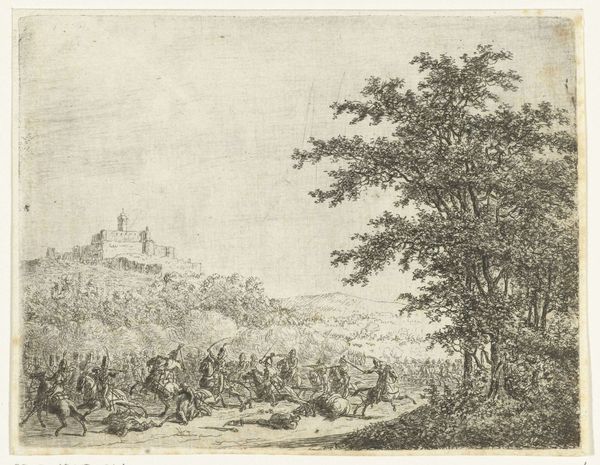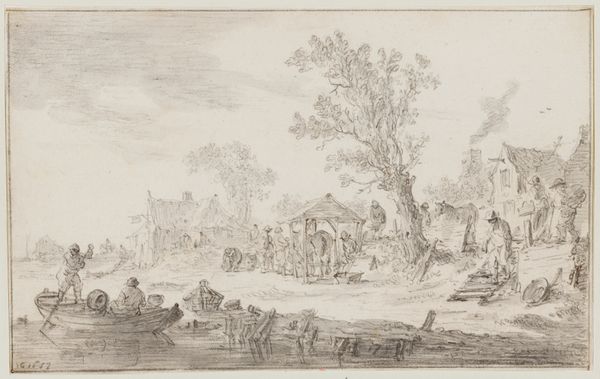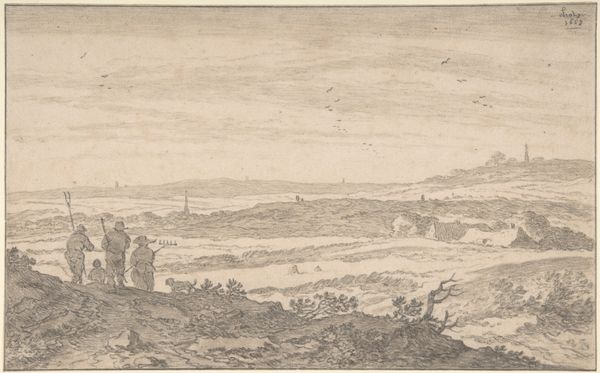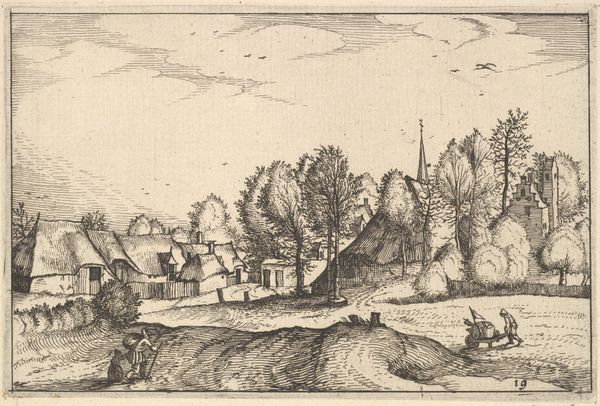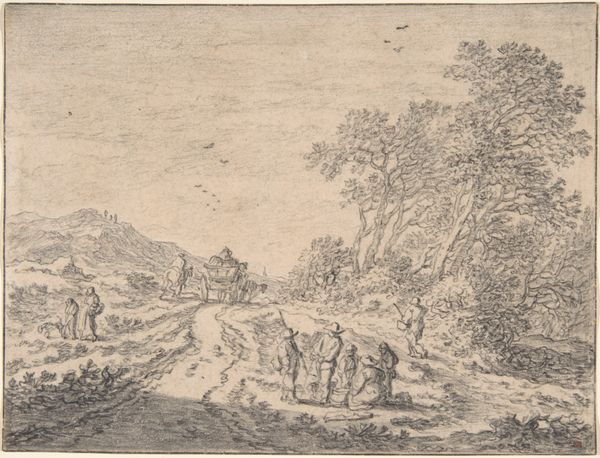
drawing, print, pencil
#
drawing
#
dutch-golden-age
# print
#
landscape
#
figuration
#
pencil
#
realism
Dimensions: sheet: 5 9/16 x 7 5/16 in. (14.1 x 18.6 cm)
Copyright: Public Domain
Editor: So, this is Pieter de Molijn's "Landscape with Two Men on Horseback," made in 1654. It's a drawing, looks like pencil on paper. There's something so quiet and observational about it, a sense of everyday life in the Dutch Golden Age, but it seems to imply a great journey is beginning or ending. What do you see in this piece? Curator: This drawing really speaks to the socio-economic landscape of the time. Molijn captures a sense of Dutch society’s increasing stratification. Notice how he positions the figures on horseback—they are literally elevated, separated from the common foot traveler. Consider the impact of class and the visual rhetoric of dominance evident in the elevated viewpoint. How do the land and figures illustrate emerging hierarchies? Editor: I see what you mean. The riders do seem separate from the others on the path. But do you think Molijn was intentionally critiquing that, or just documenting it? Curator: That's the crucial question. As an activist art historian, I try to avoid imposing contemporary values, but consider this work as an assertion that class structures and social inequities permeated 17th century Netherlands. What do you think that a modern audience could learn from de Molijn's landscape? Editor: That's a good point. I think viewing it through that lens really gives the artwork a lot more meaning than just a pretty landscape drawing. It encourages us to think about power, who has access to movement, and what 'ordinary life' meant for different social strata back then and how these inequities perpetuate over time. Thank you for your insight! Curator: Indeed. Art, even seemingly simple landscapes, reflects and refracts the complex societal structures in which it was created. This perspective challenges the art historical narrative toward one that accounts for inequitable treatment and power relations.
Comments
No comments
Be the first to comment and join the conversation on the ultimate creative platform.
